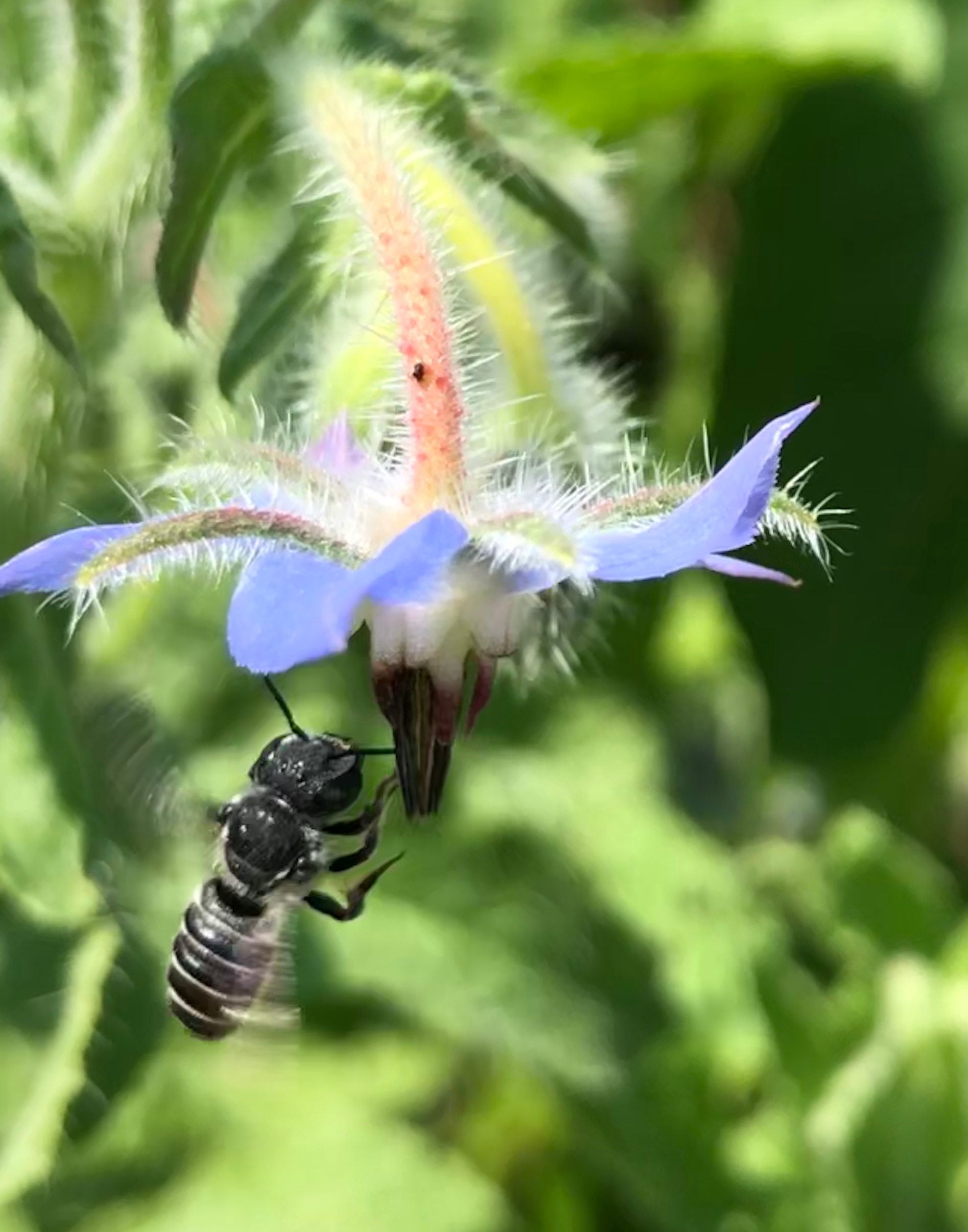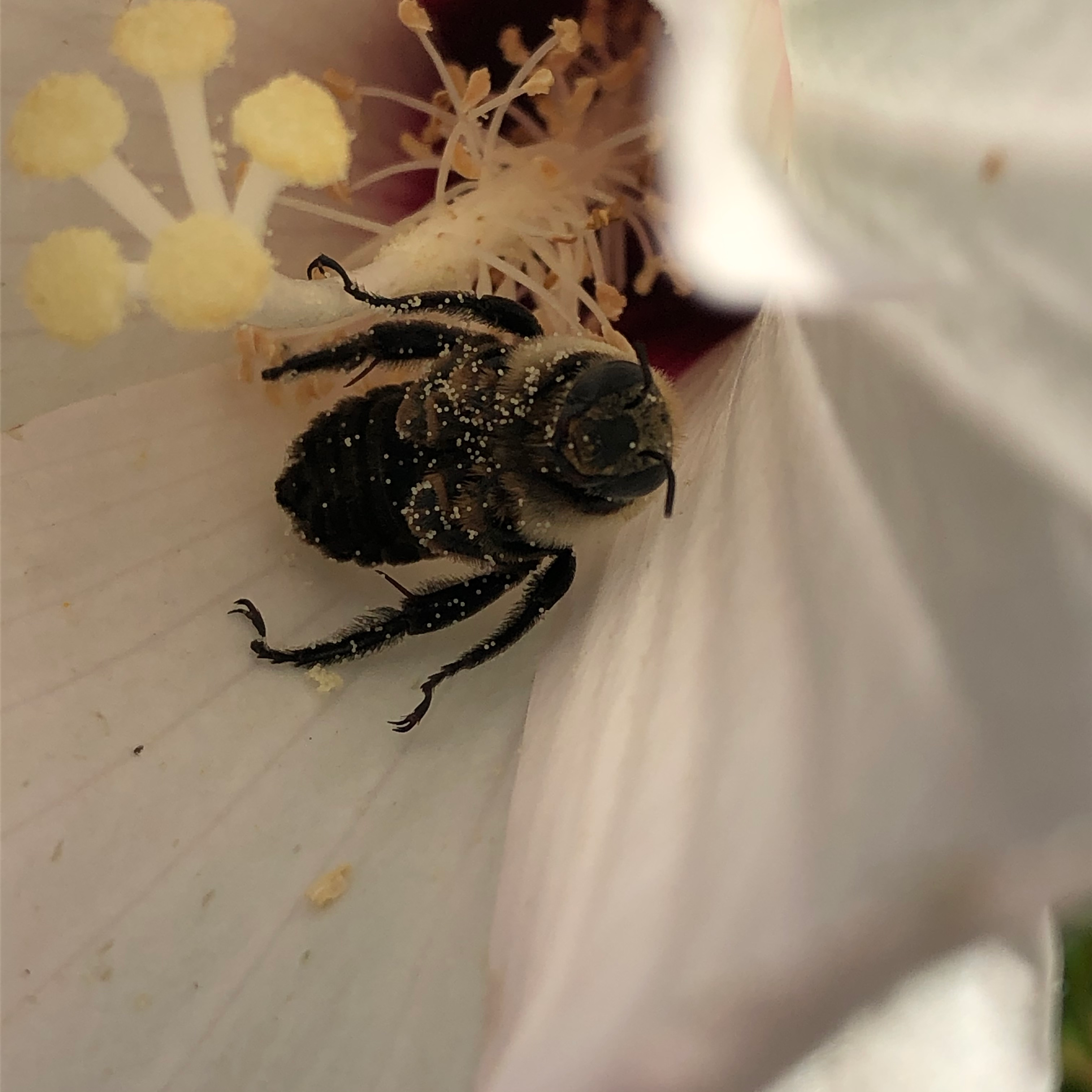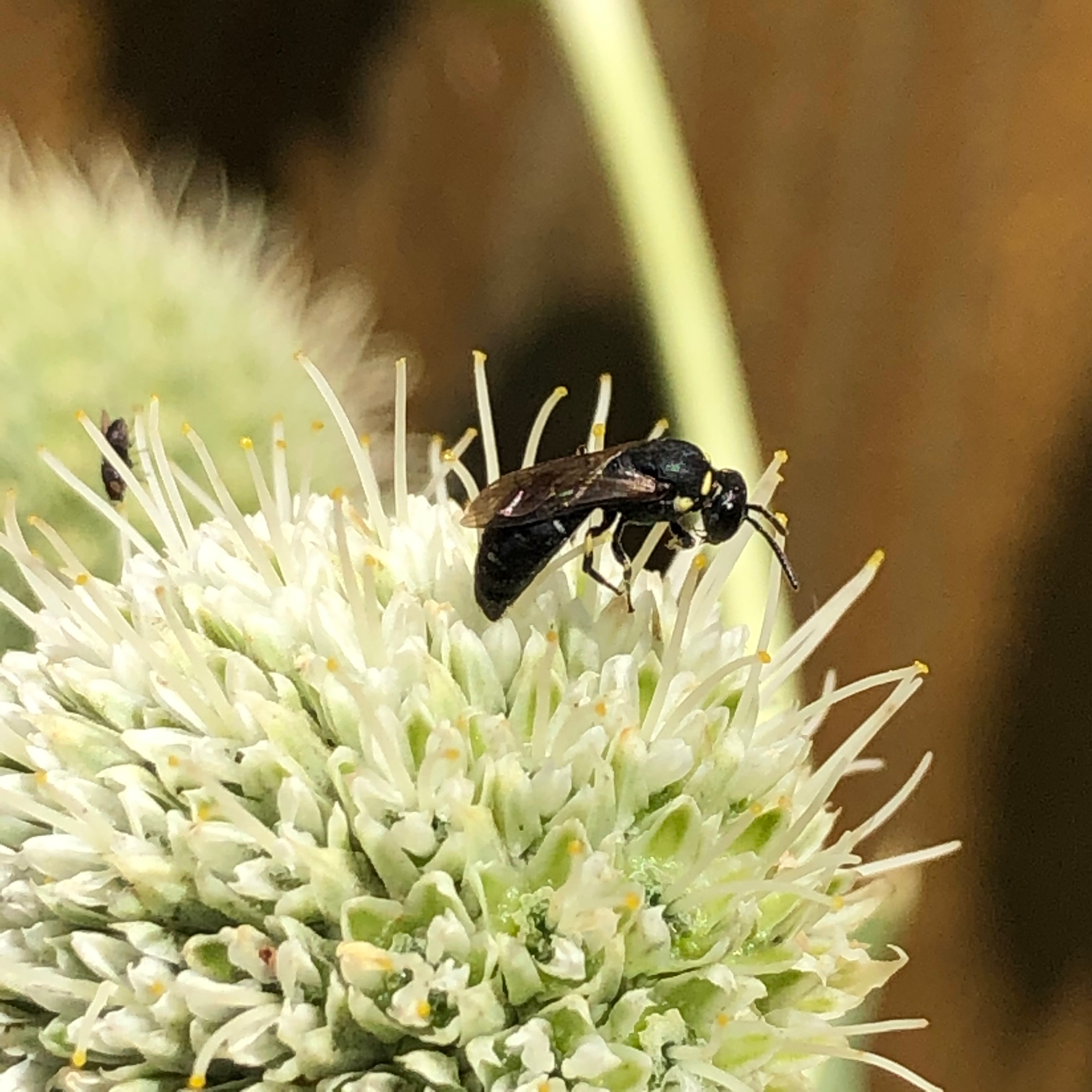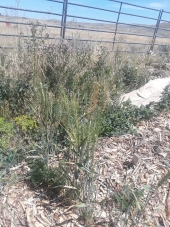
 2
2








Idle dreamer
 5
5




find religion! church
kiva! hyvä! iloinen! pikkumaatila
get stung! beehives
be hospitable! host-a-hive
be antisocial! facespace
 5
5




 7
7




A human being should be able to change a diaper, plan an invasion, butcher a hog, conn a ship, design a building, write a sonnet, balance accounts, build a wall, set a bone, comfort the dying, take orders, give orders, cooperate, act alone, solve equations, analyze a new problem, pitch manure, program a computer, cook a tasty meal, fight efficiently, die gallantly. Specialization is for insects.
-Robert A. Heinlein




used as a prop for industrial agriculture, the technology of keeping honey bees is probably a net harm. used in a way that complements and benefits existing ecosystems and supports other regenerative practices, that technology can be entirely positive.
Argue for your limitations and they are yours forever.

 4
4













Marci Sudlow wrote:I wonder how long it will be before humans attempt to domesticate and exploit the bumblebee.




that ship sailed a while back.

 1
1




Marci Sudlow wrote:Wasn't successful then, I take it?




Joseph Lofthouse wrote:I welcome all species of plant and animal to my farm, regardless of where they were living last week, last century, or last millennium. I don't wage war on life.
Pecan Media: food forestry and forest garden ebooks
Now available: The Native Persimmon (centennial edition)
 1
1




Argue for your limitations and they are yours forever.





Mike Barkley wrote:The honeybees weren't wiping out any other bees at that time.
find religion! church
kiva! hyvä! iloinen! pikkumaatila
get stung! beehives
be hospitable! host-a-hive
be antisocial! facespace
 1
1




Argue for your limitations and they are yours forever.





Mike Barkley wrote:Maybe the best approach will be to help all the bees not just honeybees. Restoring native plants, etc.
 1
1








Should I be planting natives from the honeybees homeland, which would be non-native where they are currently living in the Americas?
Argue for your limitations and they are yours forever.
 1
1




Argue for your limitations and they are yours forever.
 1
1




Tyler Ludens wrote:This article https://theconversation.com/bee-battles-why-our-native-pollinators-are-losing-the-war-40620 is about the non-native Wool-carder Bee, not the Honey Bee.
Still able to dream.

 1
1








Examine your lifestyle, multiply it by 7.7 billion other ego-monkeys with similar desires and query whether that global impact is conscionable.
 1
1




A build too cool to miss:Mike's GreenhouseA great example:Joseph's Garden
All the soil info you'll ever need:
Redhawk's excellent soil-building series





 3
3




Trace Oswald wrote:Do other people find the whole native, non-native, invasive, discussions exhausting? It seems to me that invasive is just a label tacked onto something to put it automatically in a bad light. Native and non-native is just as unappealing to me. How long does a thing have to be somewhere to be native? 100 years? 1,000? Since the ice age? Forever?
 4
4




Trace Oswald wrote:Do other people find the whole native, non-native, invasive, discussions exhausting?
The best gardening course: https://gardenmastercourse.com
Permies.com FAQ
 4
4




Trace Oswald wrote:Do other people find the whole native, non-native, invasive, discussions exhausting? It seems to me that invasive is just a label tacked onto something to put it automatically in a bad light. Native and non-native is just as unappealing to me. How long does a thing have to be somewhere to be native? 100 years? 1,000? Since the ice age? Forever?
Dave's SKIP BB's / Welcome to Permies! / Permaculture Resources / Dave's Boot Adventures & Longview Projects














 7
7




The thought revealed: Are Honey Bees, whose plight for survival in the wake of Colony Collapse Disorder has captured the hearts and imaginations of progressives and conservatives alike, throughout the world, an invasive species?
Argue for your limitations and they are yours forever.
 1
1




nature created me. So, I think that, perhaps, whatever I do is natural
Examine your lifestyle, multiply it by 7.7 billion other ego-monkeys with similar desires and query whether that global impact is conscionable.
 3
3












 3
3








 2
2




Pollinator refuges such as wildflower strips are planted on farms with the goals of mitigating wild pollinator declines and promoting crop pollination services. It is unclear, however, whether or how these goals are impacted by managed honey bee (Apis mellifera L.) hives on farms. We examined how wildflower strips and honey bee hives and/or their interaction influence wild bee communities and the fruit count of two pollinator-dependent crops across 21 farms in the Mid-Atlantic U.S. Although wild bee species richness increased with bloom density within wildflower strips, populations did not differ significantly between farms with and without them whereas fruit counts in both crops increased on farms with wildflower strips during one of 2 years. By contrast, wild bee abundance decreased by 48%, species richness by 20%, and strawberry fruit count by 18% across all farm with honey bee hives regardless of wildflower strip presence, and winter squash fruit count was consistently lower on farms with wildflower strips with hives as well. This work demonstrates that honey bee hives could detrimentally affect fruit count and wild bee populations on farms, and that benefits conferred by wildflower strips might not offset these negative impacts. Keeping honey bee hives on farms with wildflower strips could reduce conservation and pollination services.
find religion! church
kiva! hyvä! iloinen! pikkumaatila
get stung! beehives
be hospitable! host-a-hive
be antisocial! facespace




tel jetson wrote:an open access paper that was recently published seems pertinent to this discussion: Honey bee hives decrease wild bee abundance, species richness, and fruit count on farms regardless of wildflower strips. I was interested to see that honey bee hives could decrease fruit set of both winter squash and strawberries.
I won't speculate on how the study's results would translate to a polyculture/permaculture context (or even to a different region, for that matter), but I see no reason others shouldn't.
here's the abstract:
Pollinator refuges such as wildflower strips are planted on farms with the goals of mitigating wild pollinator declines and promoting crop pollination services. It is unclear, however, whether or how these goals are impacted by managed honey bee (Apis mellifera L.) hives on farms. We examined how wildflower strips and honey bee hives and/or their interaction influence wild bee communities and the fruit count of two pollinator-dependent crops across 21 farms in the Mid-Atlantic U.S. Although wild bee species richness increased with bloom density within wildflower strips, populations did not differ significantly between farms with and without them whereas fruit counts in both crops increased on farms with wildflower strips during one of 2 years. By contrast, wild bee abundance decreased by 48%, species richness by 20%, and strawberry fruit count by 18% across all farm with honey bee hives regardless of wildflower strip presence, and winter squash fruit count was consistently lower on farms with wildflower strips with hives as well. This work demonstrates that honey bee hives could detrimentally affect fruit count and wild bee populations on farms, and that benefits conferred by wildflower strips might not offset these negative impacts. Keeping honey bee hives on farms with wildflower strips could reduce conservation and pollination services.

 1
1




find religion! church
kiva! hyvä! iloinen! pikkumaatila
get stung! beehives
be hospitable! host-a-hive
be antisocial! facespace




tel jetson wrote:it's just one piece of the puzzle. doesn't sound like you're doing this, but I wouldn't make my mind up based on one study.
the negative impact on native pollinators wasn't the most interesting part to me. that seems like pretty settled science by now. maybe it shouldn't have, but the reduction in fruit is what surprised me.
 1
1




Weeds are just plants with enough surplus will to live to withstand normal levels of gardening!--Alexandra Petri

|
I don't like that guy. The tiny ad agrees with me.
The new permaculture playing cards kickstarter is now live!
https://www.kickstarter.com/projects/paulwheaton/garden-cards
|


